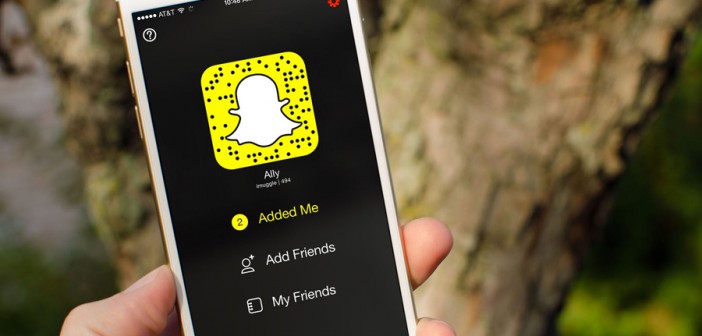Snapchat: The King of Millennial Micro-Moments
In 2015, Snapchat put the world on notice that the app is an advertising force to be reckoned with — maybe the advertising force to be reckoned with. Named Adweek‘s hottest digital brand, Snapchat commanded a reported $750,000 for brands to place ads, and the millennial darling reported more than 6 billion videos daily. Snapchat will become even bigger in 2016 as brands learn how to apply the app to create micro-moments for the surging millennial population.
Snapchat has accomplished something nearly impossible: opening its door to brands while retaining its essential coolness among a loyal user base composed largely of millennials. In fact, big brands climbing onto the Snapchat bandwagon may have helped the app transcend a reputation as the go-to platform for sharing racy photos. Here are some of my favorite examples of brands that relied on Snapchat to increase their own coolness quotient:
- McDonald’s became the first brand to sign up for a sponsored geofilter, or a special content overlay (akin to a digital sticker placed on Snapchat photos and videos) that can be accessed only at certain locations. Customers across the brand’s 14,000 U.S. restaurants could decorate their Snapchat images with playful illustrations of fries and double cheeseburgers, creating tremendous engagement for a brand that needs it.
- Dunkin’ Donuts took the geofilter ad concept a step further to generate demand by offering free cups of coffee on National Coffee Day (September 29). Snapchat users who clicked on a geofilter of raining coffee beans could get a free medium cup of coffee, but they had to unlock the image either at or near a Dunkin’ Donuts store to get their coffee. Dunkin’ Donuts also used Snapchat to run video ads on the ESPN Discovery Story on Snapchat as part of its sponsorship of ESPN’s Monday Night Countdown.
- In November, Sony Pictures Entertainment made innovative use of Snapchat Discover channels, which consist of dedicated content for publishers such as CNN and Mashable. Sony launched a temporary channel devoted exclusively to the movie Spectre as part of a worldwide marketing blitz to promote the 24th official James Bond movie. The channel consisted of behind-the-scenes content (such as photos from different shoot sites) shared across 17 countries. The exclusive nature of the information shared made Spectre exist comfortably alongside all the publishing-oriented channels.
These three brands are all using Snapchat to capitalize on “micro-moments,” which Google defines as real-time moments of consumer discovery that occur on mobile devices. Micro-moments are little touch points that can add up to big moments for brands who are present with compelling content when consumers are on their mobile phones to find places to go and things to do.
Google characterizes micro-moments as “the new battleground for brands.” In a seminal report, Micro-Moments: Your Guide to Winning the Shift to Mobile, Google notes that we check our phones 150 times a day. Brands have an opportunity to create contextually relevant content that will engage consumers when we’re checking our phones to perform tasks. Writes Google:
Thanks go mobile, micro-moments can happen anytime, anywhere. In those moments, consumers expect brands to address their need with real-time relevance.
What Dunkin’ Donuts, McDonald’s, and Sony realize is that millennials are creating more and more of those micro-moments. In 2015, millennials surpassed baby boomers as the largest share of the U.S. voting population. As Google notes, 87 percent of millennials always have their smartphones at their side.
In recent weeks, Snapchat has made it easier for brands to create micro-moments through micro targeting. Snapchat has been offering “audience bundles,” or users grouped by different themes such as “world news and culture-themed package.” The themes correspond to readers of different media such as Mashable and CNN that have Snapchat sections. According to Adweek, Snapchat can already target content by gender and for users over the ages of 18 and 21.
Given the size and influence of the millennial population, Snapchat becomes an increasingly important option for brands. Businesses that want to capitalize on Snapchat would do well to:
- Be contextually relevant. Content that strikes the wrong tone and fails to engage in a playful way will fail. Many other brands besides the ones I’ve cited have learned how to create contextual content on Snapchat, including Taco Bell, which does an excellent job gamifying Snapchat on special occasions such as Valentine’s Day.
- Create “next moments,” or actions that occur after a brand and a consumer find each other. Dunkin’ Donuts created a next moment by encouraging Snapchat users to walk into its stores and receive a free cup of coffee.
As Snapchat builds out its targeting capabilities to justify its advertising rates, I believe next moments represent a huge opportunity for brands on Snapchat in 2016. Enterprise brands with multiple locations can and should tap into the Snapchat geo-filtering feature to create customers at the local level. So long as businesses stay focused on creating the right kind of contextual content, brands will win and so will Snapchat.




